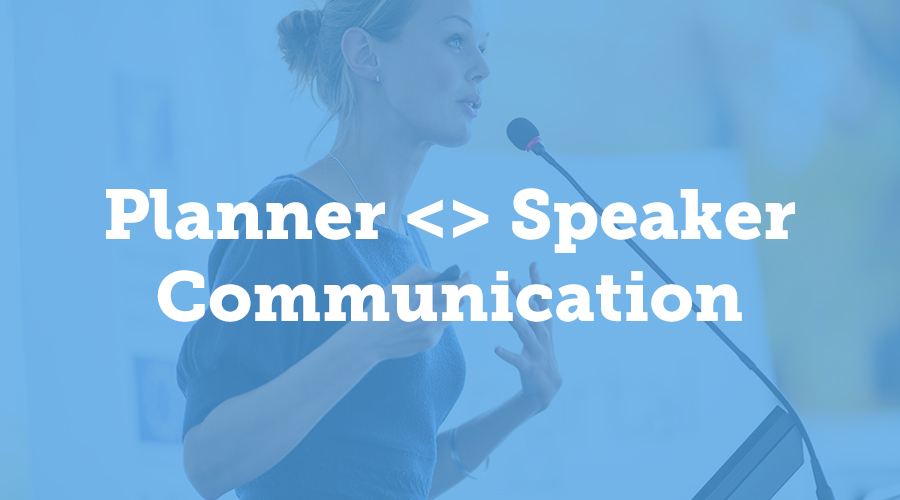Successful Communication for Virtual & Hybrid Events

How to Improve Communication Between Speakers, Exhibitors, and Attendees
Bill Klein, Palisades Convention Management (PCM) CEO and Program Coordinator for the Display Week Conference, recently posed the question:
“What makes a conference, a conference?”
His answer — just one thing:
Interactivity.
It’s the connections made between individuals becoming part of a larger conversation that makes a gathering like Display Week worthwhile for its attendees.
To make these connections possible, good communication is required.
In this article, we’ll expand on Bill’s observation and consider the different types of communication that lead to a successful event.
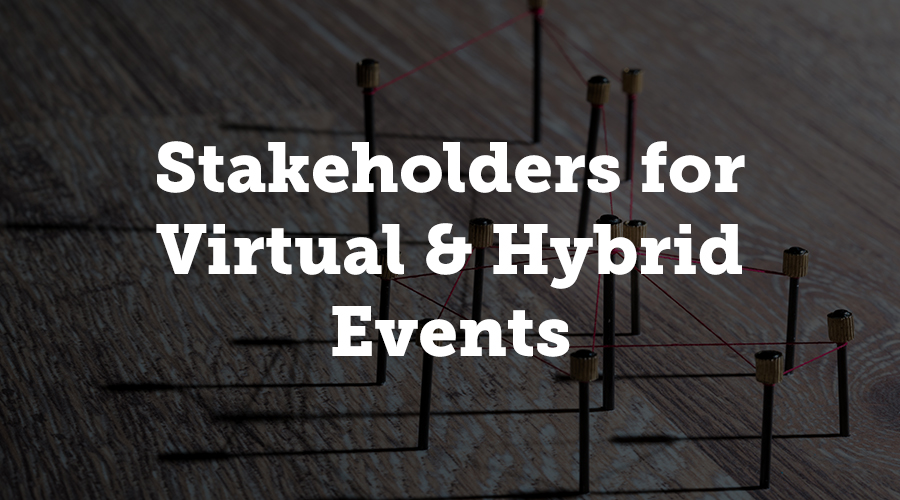
Stakeholders for Virtual & Hybrid Events
Like live face-to-face events, the success of virtual and hybrid events depends on your stakeholders. Here are the most common ones:
- Speakers — These are the people who put content together and present it as education to attendees.
- Exhibitors — These are the companies that sponsor events and sell products to attendees looking for new solutions.
- Attendees — These are the participants of an event that consume content and purchase products. They are why your event exists!
- Planners — These are the people that put the event together for the benefit of the three above stakeholders.
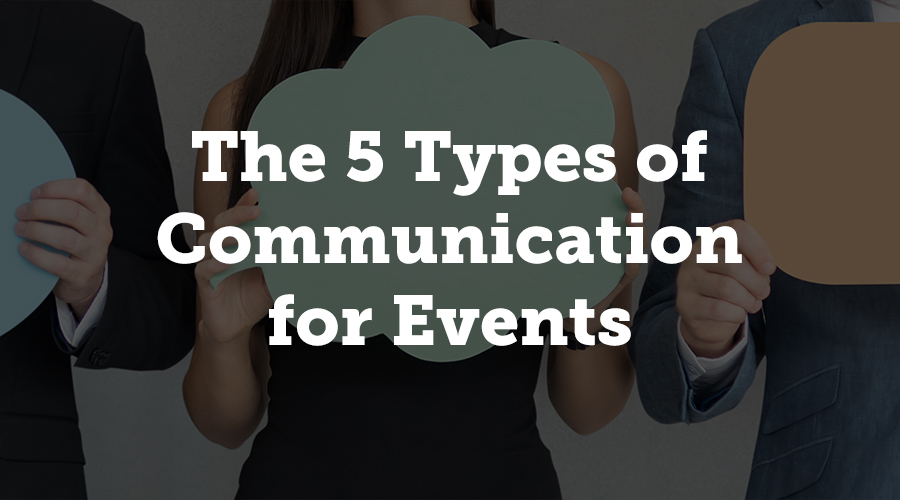
The 5 Types of Interactions at Events
Each one of these stakeholders interacts with each other in some way. Here are the five most common types of interaction:
- Planner <> Speaker
- Planner <> Attendee
- Planner <> Exhibitor
- Attendee <> Attendee
- Attendee <> Exhibitor
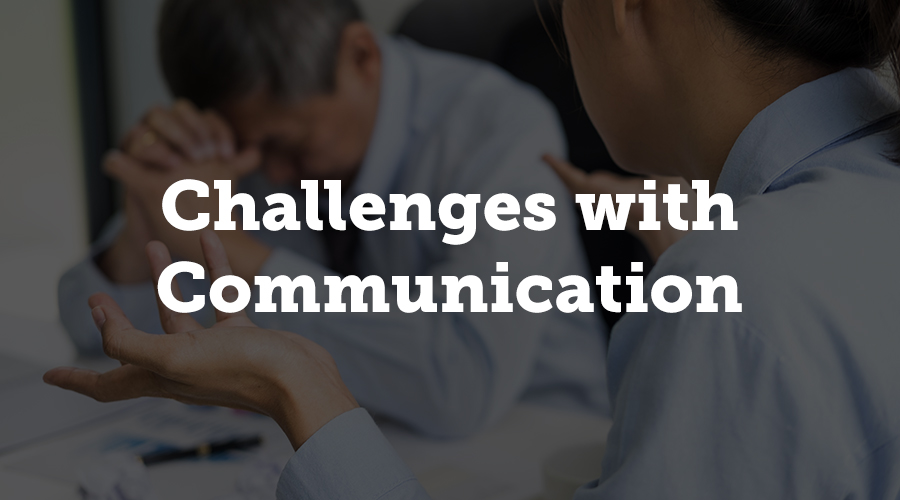
Challenges with Communication
Before we jump into each one of these types of communication relationships, let’s identify some of the most common challenges with communication.

1. Identifying Patterns of Misunderstanding
When something you communicate is received in an unexpected way, that’s called a “pattern of misunderstanding,” according to Jenny Donelan, PCM’s Director of Publications and Special Projects.
It’s also an opportunity. Figuring out how to communicate it better or react creatively to a misunderstanding is simply part of the planning process.

2. Discovering the Path of Least Resistance
You might be tempted to say, “No,” to you stakeholders when they misunderstand a request or a process.
Instead, ask yourself how you might accommodate their misunderstanding. After all, there are probably others who interpreted this request in the same way.
It may take a little extra work, but flipping the script and finding ways to accommodate different processes may work out for the better for all stakeholders.

3. Designing the Technology Experience
Another crucial aspect of planning is getting inside your stakeholders’ heads and thinking about what their experience might be like. This is especially important for virtual and hybrid events that depend so heavily on technology.
Creating a diagram in a spreadsheet to walk through the process from a users’ perspective is a great exercise. You can then translate the desired experience into a workflow when you begin having regular calls with their technology partners.
This is true for everything from session submissions, speaker uploads, exhibitor booth and sponsorship purchases, all the way through attendee interaction with other participants and content on the event website and app.
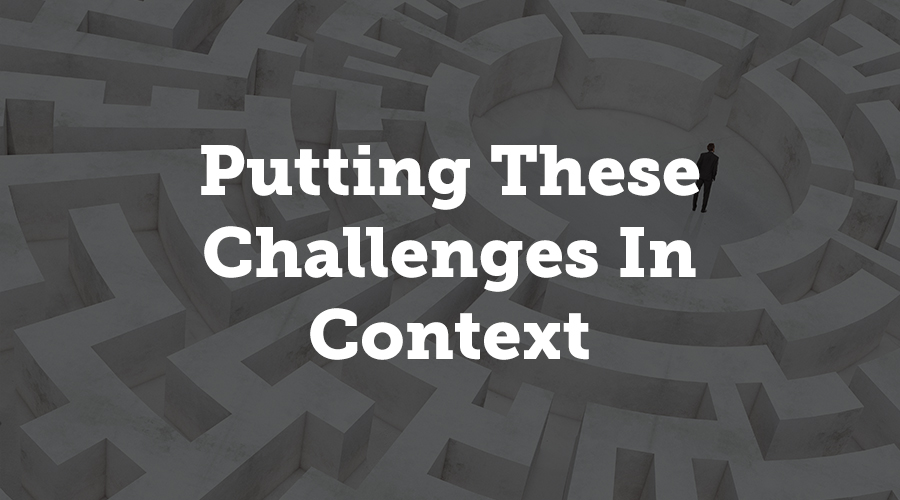
Putting These Challenges In Context
Now that we understand the stakeholders involved in our events and some of the most common communication challenges, let’s explore each type of communication relationship.
Planner <> Speaker Communication
Communicating well with speakers is extremely important. These stakeholders provide your attendees with valuable information.
The education they offer is often the primary reason attendees are able to justify attending your conference.
3 Tips for Good Communication with Speakers
While putting together Display Week 2020, the planning team was was transparent and over-communicated everything. If speakers asked what the platform would look like and they didn’t know yet, they explained when they would have more information.
When the timeline changed, PCM told their speakers. If someone didn’t understand something, they patiently explained it. Everyone was patient and understanding in return.

1. A Little Info Goes a Long Way
Give speakers just enough to keep them satisfied — a little bit of information goes a long way.

2. Be Transparent — INCLUDING Unknowns
Share dates and be transparent about where you are in the planning process — including your unknowns.

3. There’s No Such Thing as Overcommunication
Communicate with people often, especially when things change — and things change often, so it’s never one email too many.
Technology Channels & Examples

Use email to overcommunicate with your speakers. Send them separate emails for each activity you expect them to participate in.
For example, if attendees will be using an audience response system to communicate with speakers, put information about the ARS in an email by itself. Save other information you need to collect or communicate for another email.
Try to keep these emails as short and to-the-point as possible. Only include one link per email if possible.

Speaker Task List
An easy way to communicate A LOT of information with just one link is by using a speaker portal.
The email module in CadmiumCD’s Conference Harvester, for example, allows you to include a hotkey with a link for speakers to log into the speaker portal. Once they sign in, speakers get a task list of all the items you need them to complete. This could be downloading a file, uploading their presentation or bio, or submitting information for the audience response system.
The task list is easy to follow and provides green checkmarks for completed tasks and red x marks for incomplete items.

Content Collection
Remember when we talked about Patterns of Misunderstanding? For Display Week 2020’s virtual event, content collection was the source of one of these.
PCM had asked Display Week speakers to use the Conference Harvester to upload their presentations. They then wanted speakers to use the Presentation Audio Task, which allows speakers to record audio over each slide, to create webinar-style video recordings of their sessions.
Some speakers, however, interpreted this request differently. They thought that they had to record a video of them presenting their session.
Instead of making speakers who recorded videos do it all over again, PCM simply added a Video Upload Task to the Conference Harvester and accepted either format. It was a win-win for everyone involved.
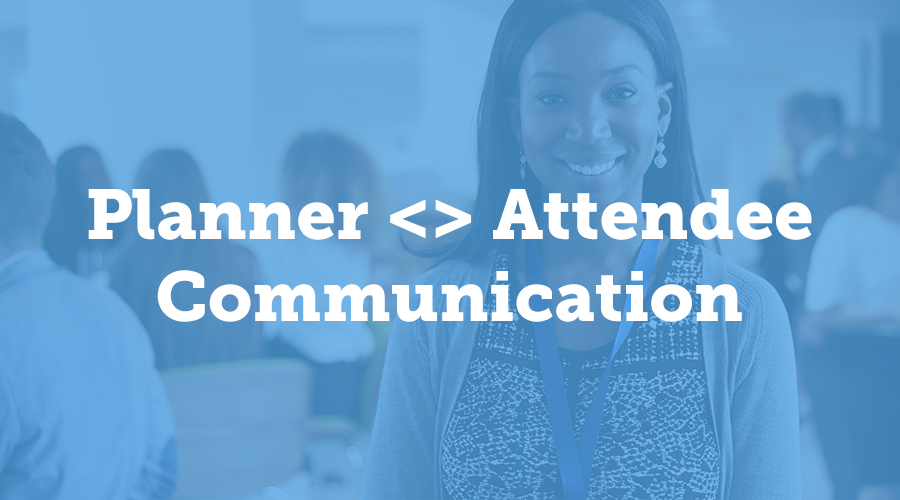
Planner <> Attendee Communication
Remember the 3 Tips for Good Communication?
They’re relevant here as well. Make sure you:
- Update them when updates are available.
- Be transparent, even with unknowns.
- Don’t fear overcommunicating important information.
Good Communication = Good Design
Another form of communication is event design. Creating an attendee experience that gets attendees to the activities and information they want to engage with without frustration requires thoughtful design.

Content Discoverability
Display Week, for example, is not one linear track. There are many different types of events all happening at once.
So, PCM structured their Symposium, Short Courses, Business Conference, and Seminars as different tracks on the home page of their virtual events platform.
They also broke out their exhibit hall and additional special events to help attendees navigate those activities too.
Which leads to…
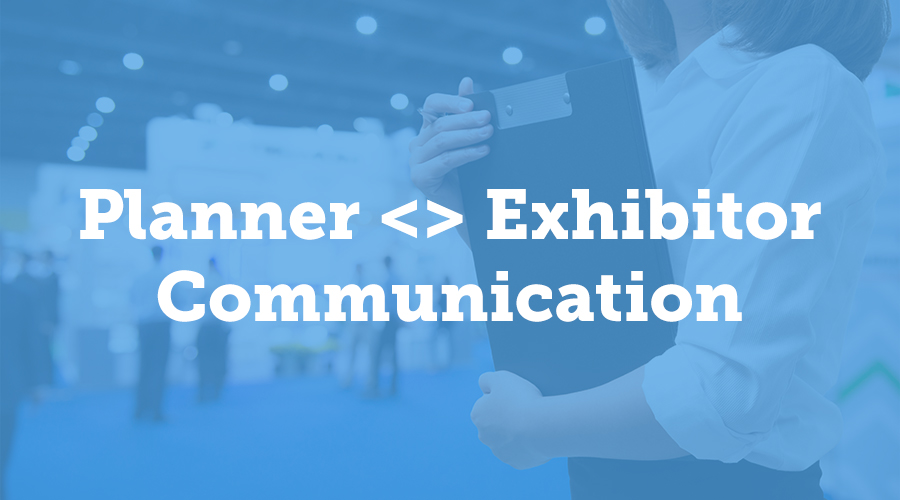
Planner <> Exhibitor Communication
For many shows, exhibitors (and by extension, sponsors) are what makes operation costs possible.
That’s why it’s so important to make sure you communicate your offerings to exhibitors and sponsors just as well as you do with other stakeholders.
Guess what?
The 3 tips are still relevant here! Share information, be transparent, and overcommunicate. It’s a universal system.

Exhibitor Management & Sales Portal
Like the Speaker Portal, an Exhibitor Portal can be just as effective for communication with your exhibitors and sponsors.
Send exhibitors and sponsors emails to log into the system, then simply have them complete the task list. They can fill out their company information, upload brochures and other materials, purchase additional sponsorship items, and assign booth staff.
This is also a great place to redirect exhibitors when they’re looking for booth analytics, lead retrieval reports, and more.
A few additional tips for communicating with exhibitors.

1. Create a Sponsor Prospectus for Easy Decision-Making
CadmiumCD partner, Jennifer Kerhin, CEO of Sponsorship Boost, recently hosted a webinar on how to create a sponsor prospectus for virtual events. It covered how to discover the best options for your exhibitors and translate them to a virtual environment.
A prospectus helps you communicate sponsorship options easily to potential exhibitors and sponsors so they can make the best decisions for their needs.

2. Create an Explainer Video About Virtual Booths
Another way to communicate options with exhibitors is to create a quick video explaining what virtual booth and sponsorship items are available, and how to maximize engagement and ROI with those assets.

3. Provide Coaching for Making the Most of the Event
Jackie Stasch, former Senior Manager of Corporate Relations at UCAOA, says that coaching exhibitors is one of the best ways to communicate your options.
Hosting webinars and having one-on-one meetings with exhibitors and sponsors are great ways to pair your event’s options with their specific needs.
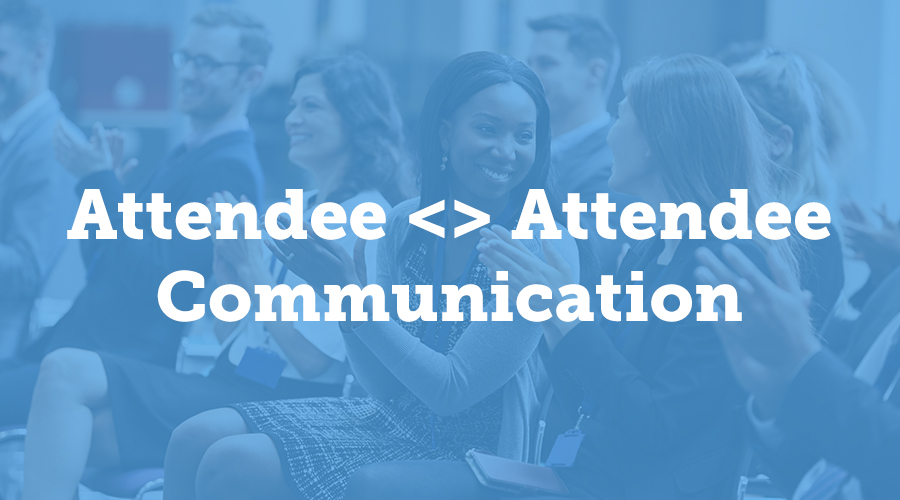
Attendee <> Attendee Communication
There are lots of resources out there for attendee engagement. It seems to be what everyone is talking about lately.
No surprise, considering Bill’s earlier observation that interactivity is what makes a conference, a conference.
Attendee Interaction
Display Week attendees are primarily concerned with education. That’s why PCM decided that features like scavenger hunts and grab bags were not right for their audience.
However, to foster interactivity between attendees, they included a live audience response system that featured Q&A.
Attendees could drop in comments and ask questions of speakers at any time. This was especially useful for an international audience that was logging in during different times of the day from different timezones.
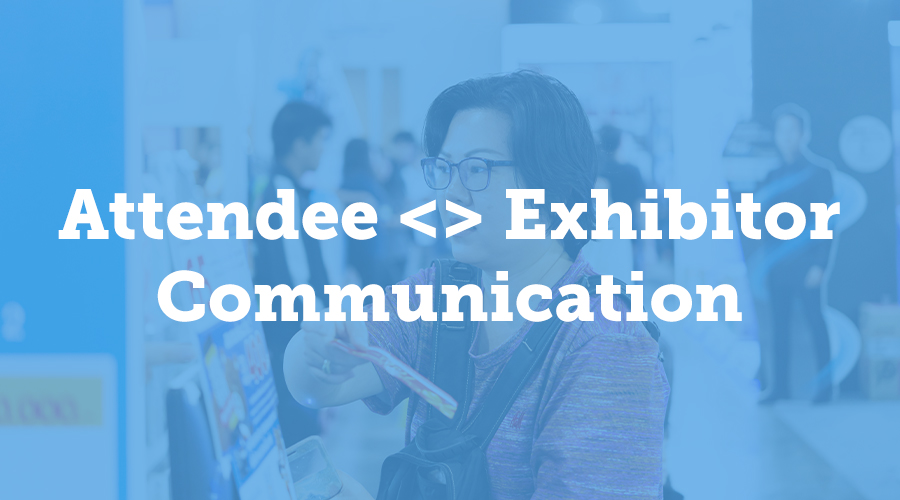
Attendee <> Exhibitor Communication
And finally, we come to attendee to exhibitor communication. Improve this, and you improve the perceived value of your conference for exhibitors, which increases your ROI from sponsorship and booth sales.
The largest challenge with virtual and hybrid events is fostering interaction between these stakeholders.
Face-to-Face Interactions
The best way to show value is to get exhibitors face-to-face with attendees. There are really 3 steps in doing this:
- Driving traffic to virtual booths.
- Increasing engagement with booth assets.
- Fostering real-time conversation between attendees and booth staff.
Let’s explore options for each.

1. Driving Booth Traffic
The burden of the responsibility for this is mainly exhibitors. It’s important that they use all the booth options available to maximize visibility.
For example, research from ASN’s NUTRITION 2020 LIVE ONLINE event shows that exhibitors who took advantage of 5 or more features (ex. video chats, intro videos, banners, etc.), saw an increase of 76% when it came to booth traffic.
Planners can also help these numbers though. Offering gamification options like scavenger hunts, or matchmaking features will get more eyes on exhibitor booths and foster relevant interactions for attendees.

2. Increasing Engagement
Again, the burden of the responsibility is on exhibitors, but during your coaching sessions with them you can offer some valuable advice.
Show exhibitors how they can connect giveaways, scavenger hunt questions, and video spots and resource uploads to create a marketing loop within their own booth.
For example, take into consideration a campaign like this:
- An exhibitor runs an ad on the homepage of your virtual event website that links to their booth.
- When an attendee clicks it, they begin to watch the video on the company details tab.
- At the end of the video, there is a call to action to jump into a video chat with a booth representative to get the answer to the scavenger hunt question.
- The booth representative takes down their info and has a brief conversation with them, then directs them to the virtual brochure.
- On the brochure, there is another call to action to enter the company’s giveaway of an Amazon gift card, by simply requesting or scheduling a demo.
Any one of these engagements is meaningful, but when paired together, these are a powerful combination that will maximize attendee time in a single company’s virtual booth space.

3. Fostering Real-Time Conversations
We already mentioned video chats. These are one of the single most powerful tools for exhibitor to attendee engagement, as they emulate that face-to-face experience.
However, there are additional ways that you can foster conversations in a less salesy manner:
Sponsored Symposia — Allowing exhibitors and sponsors to present their knowledge or sponsor a popular session topic is a great way to help them communicate their brand by offering valuable information to attendees.
Round Table Discussions — Using video chats, you could foster engagement between these stakeholders through small group product or topic discussions.
Product Showcases — Sometimes attendees aren’t looking for companies to work with, but product solutions to their problems. A product showcase is a perfect way to present these solutions separate from the virtual booth, which can increase leads and one-to-one interactions for exhibitors.

The 5 Types of Communication for Events (Revisited)
Just to recap, we took a look at five unique types of interactions between the most popular stakeholders at our virtual and hybrid events:
- Planner <> Speaker
- Planner <> Attendee
- Planner <> Exhibitor
- Attendee <> Attendee
- Attendee <> Exhibitor
We also explored how sharing information, being transparent, and overcommunicating important details is essential for successful communication with all stakeholders.
Hopefully this article gives you some ideas for how to improve your own communication with stakeholders as well as foster better interactivity among your speakers, exhibitors, and attendees.
About CadmiumCD
CadmiumCD is an award-winning event management platform for award-winning event professionals. Visit go.cadmiumcd.com/virtual to see how eventScribe Live can help you create exceptional virtual and hybrid experiences.
